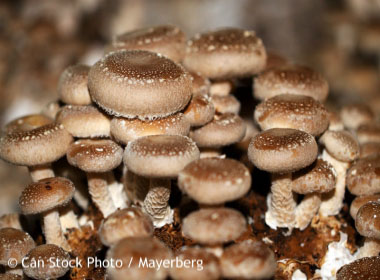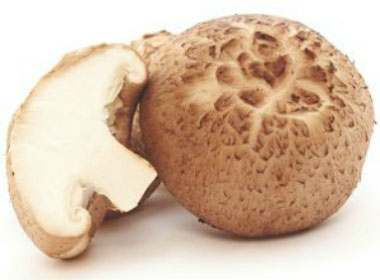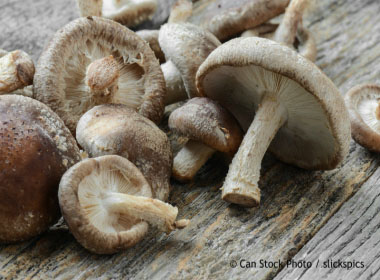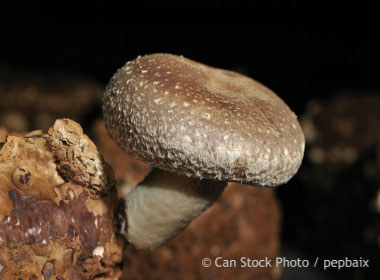






Do not eat any fungi that has not been properly identified by a qualified professional, some are DEADLY when ingested. All edible wild fungi MUST be cooked.
Shitake is native to a few countries in east Asia, most commonly in Japan and China. Temperature strongly affects two different aspects of this mushroom's life: mycelia growth and the fruiting body growth. The name shiitake is composed of shii, for the Japanese tree chinquapin (Castanopsis cuspidate), and take, meaning mushroom. The mushroom is found on fallen trees during the spring and autumn. Even though it grows in forests, globally, this is most recognized as a cultivated mushroom; in fact, it was first cultivated centuries ago in Japan. In China, this mushroom is estimated to have been cultivated for the first time between 1,000 and 1,100 AD. This is a highly sought-after medicinal mushroom.
Type
Distinguishing Features
The shitake has an umbrella-shaped cap that is tan to brown in colour. The edges of the cap roll down and inwards towards the whitish, cream-coloured gills on the underside of the cap.The stem of the shiitake is also white or cream but can turn brown as the mushroom grows larger. Caps grow anywhere from 5 to 15 cm (2 to 6”) in diametre.
Height
Lentinula edodes usually grow anywhere from 5 to 8 cm (2 to 4”) tall.
Habitat
Shitake grow in groups on the decaying wood of deciduous trees, particularly chinquapin, chestnut, oak, maple, beech, sweetgum, poplar, hornbeam, ironwood, and mulberry. Its natural distribution includes warm and moist climates in southeast Asia.
Spore Print
White.
Season
Shitake fruits in the spring and the autumn.
Gills
Gills are adnexed.
Edibility
This mushroom is the second most widely cultivated mushroom in the world. It has been a popular food source in the cuisine of Asia for thousands of years. They are a rich source of copper, selenium, iron, zinc, dietary fiber, and protein. It is also a good source of the B-complex, vitamin C and vitamin D.
Other Name
Donko Mushroom.
To support our efforts please browse our store (books with medicinal info, etc.).
Winter Survival Food Handbook

PDF Plant Magazines
Types of Wild Food
Geographic Zones Seasons
Disclaimer
EdibleWildFood.com is informational in nature. While we strive to be 100% accurate, it is solely up to the reader to ensure proper plant identification. Some wild plants are poisonous or can have serious adverse health effects.
We are not health professionals, medical doctors, nor are we nutritionists. It is up to the reader to verify nutritional information and health benefits with qualified professionals for all edible plants listed in this web site. Please click here for more information.
Why Edible Wild Food?
- Food costs are rising
- Free, wild food is readily abundant
- Wild food adds nutrition to your diet
- Wild food can help treat various medical conditions





